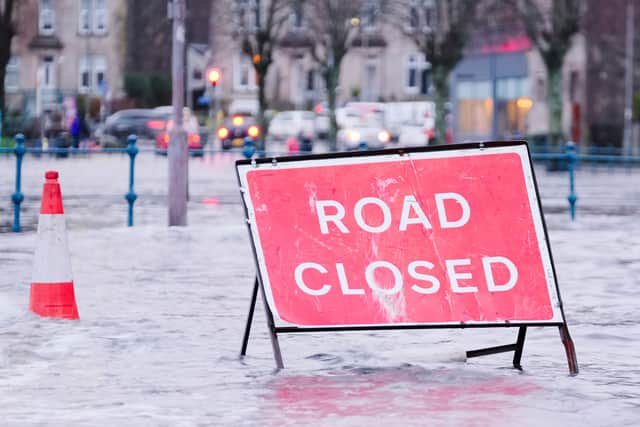Climate change: 3,500 people at high risk of flooding across Liverpool - worst affected areas revealed
and live on Freeview channel 276
More than 7,700 people in Liverpool live in areas at risk of flooding with 3,557 of those in the highest risk category, according to figures from the Environment Agency.
Although this less than 2% of the city’s population, there is a concern that flood risks will increase as climate change continues to worsen.
Advertisement
Hide AdAdvertisement
Hide AdAmid the recent downpours, Merseyside Fire and Rescue Service say they’ve been receiving a large volume of calls in relation to flooding across the region.
Countrywide, the Environment Agency identified almost five million people, around 8% of the population, who live with some degree of flood risk caused by rivers and seas. Risk ranges from very low to high.
What is a flood risk?
The Environment Agency maps floodplains and uses modelling of flood defences as well as local expertise, to assess the flood risk of local areas. Flood risks are then allocated one of four flood likelihood categories to describe the chance of flooding each year. These are:
- High risk: there is a chance of flooding of greater than 1 in 30 (3.3%) each year
- Medium risk: there is a chance of flooding of between 1 in 30 (3.3%) and 1 in 100 (1%) each year
- Low risk: there is a chance of flooding of between 1 in 100 (1%) and 1 in 1000 (0.1%) each year
- Very low risk: there is a chance of flooding of less than 1 in 1000 (0.1%) each year
Loading....
Environment Agency figures show 6.1% of people who live in flood risk areas are at high risk, 22.7% are in medium risk, 41.9% are in low risk areas and 29.3% are in very low risk. Overall, this affects 4,823,000 people.
Advertisement
Hide AdAdvertisement
Hide AdThe Environment Agency calculated the number of people at risk of flooding from rivers and seas by multiplying residential property numbers by the average household size of 2.36, as measured by the latest Office for National Statistics General Lifestyle Survey.
Liverpool’s flood risk
Liverpool has 3,557 people at high risk of floods with an additional 337 with a medium warning, with 3873 in the lower risk bracket.
The data shows 1.3% of the city’s population are at risk of flooding, with 0.6% of people at high risk.
This rate is higher than many other areas in the North West, including Cheshire and Manchester.
Advertisement
Hide AdAdvertisement
Hide AdParts of Anfield, Walton and Norris Green have the highest risk in Liverpool, with a red high risk warning for floods.
Loading....
The Environment Agency has also identified 2.8 million properties are at risk of flooding in England, representing 8.4% of all properties.
In Liverpool, the toal number of properties at risk of flooding is 3887.
‘The threat is expected to grow’
Last year NationalWorld revealed how councils across England had spent almost £1.7 billion to fight floods and coastal erosion with government spending rising by 176% in real terms between 2010-11 and 2019-20. The costs of protecting the coast from encroachment by the sea increased by 59%.
Advertisement
Hide AdAdvertisement
Hide AdBut campaigners say more needs to be done to better protect communities.
Friends of the Earth campaigner, Paul de Zylva said Prime Minister Liz Truss needs to do more.


“It’s shocking that millions of people and properties across the UK are at risk from flooding, and alarmingly the threat is expected to grow as climate change takes hold,” he said
“The new Prime Minister must do far more to make our communities and infrastructure resilient to the more frequent and intense weather extremes that are likely to batter Britain – such as flooding and droughts.”
‘A priority for the new Prime Minister’
Advertisement
Hide AdAdvertisement
Hide AdBen Margolis, interim director of The Climate Coalition, added that tackling climate change must be a priority for the new Prime Minister.
“Flooding is one of a number of devastating climate threats in the UK, with research suggesting almost one in three people suffer post traumatic stress disorder after experiencing their home being flooded,” he said.
“If we want to ensure people can live without fear of flooding or other extreme weather like droughts and wildfires, we need the Government to roll out an ambitious plan for the UK to bring down emissions and protect people from the dangers of climate change.
“This must be a priority for the new Prime Minister. And essential to this brief is ditching expensive fossil fuels that are causing all of our bills to soar, and investing in renewables and the natural world that will protect people today, and generations to come from flooding and climate change.”